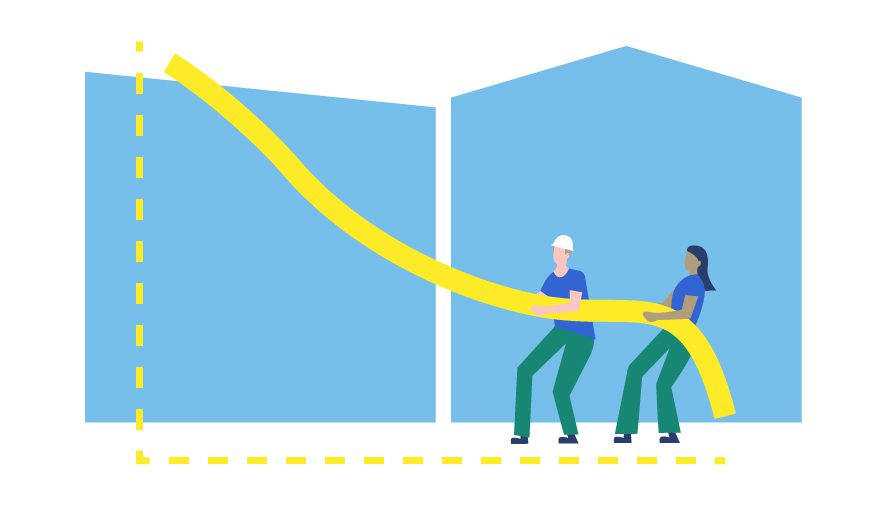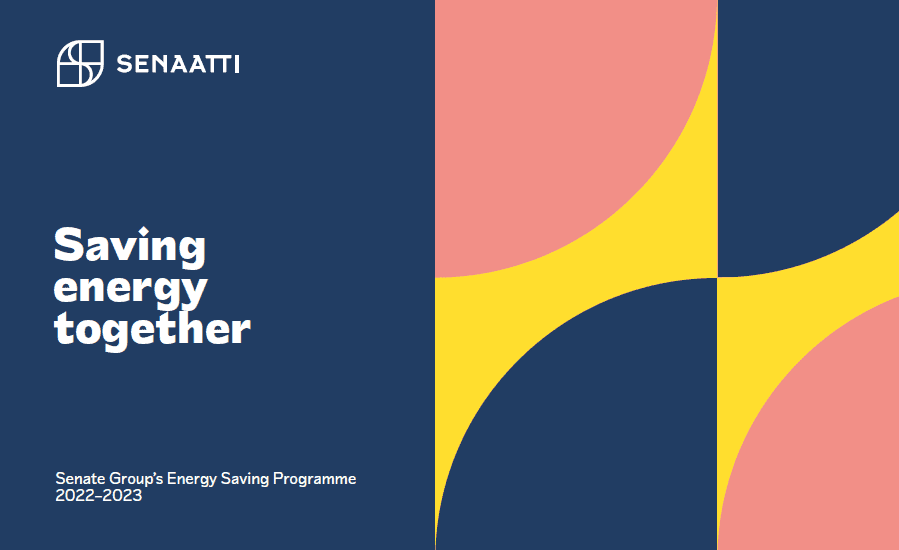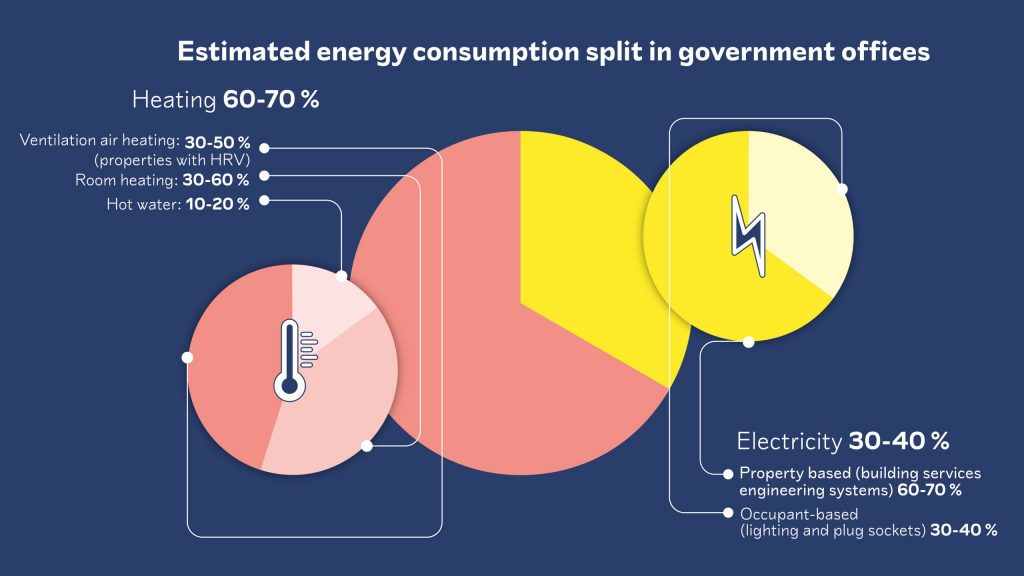
Energy Saving Programme
Exceptional times call for decisive action. Our aim is to help Finland through the tough winter ahead and to curb the rising cost of energy. This is why we have launched an extensive Energy Saving Programme for the upcoming heating season together with our customers and service providers. We want to do our bit to ensure the security of energy supply in Finland.
Engaging customers in efforts to save energy
The energy crisis affects us all, and we want to be proactive and contribute to finding solutions. To minimise the effects of the difficult situation, we need both our customers and service providers to help us in our energy-saving efforts.
Our Energy Saving Programme is about introducing new, fast and efficient ways to save energy. Most of the measures relate to optimising settings in building services engineering systems, and we will be taking care of these in collaboration with our property maintenance partners. We are also looking into demand-side management and exploring possibilities of transferring electricity consumption away from hours of high load. Finally, we are ramping up our long-term strategy of increasing the use of renewable sources of energy such as solar and geothermal.
Pillars of the Energy Saving Programme

Building services engineering systems

Customer engagement

Demand-side management

New energy-saving solutions

Find out more about our Energy Saving Programme
Click on the link below to download our Energy Saving Programme and find out more about our energy-saving measures for the 2022/2023 winter.
The ultimate aim of the programme is to cut energy consumption by between 50,000 and 75,000 MWh, which is equivalent to the annual energy consumption of 10,000 one-bedroom flats.The savings in energy costs will be as high as EUR 10 million. The programme kicks off at the start of October 2022, and the measures and their duration will vary from one property to the next. The changes will not affect indoor air quality. The temperature and other settings in our properties always comply with Finnish Indoor Climate Standards.

Working together towards our goals
Our Energy Saving Programme is designed to engage our customers and get them involved in our efforts to save energy. As our tenants, they are in an excellent position to provide us with information about, for example, which rooms in their building are only used occasionally and to identify areas and systems that could be used more efficiently from the perspective of energy consumption.
Using each room for a purpose that fits its size and other characteristics is essential for achieving optimal energy performance. In any property, it is the occupants who know best how each room is used and who are therefore in the best position to identify ways to save energy. Input from the occupants is invaluable for our efforts, which is why we are urging all our customers to actively think of new ways to lower their energy consumption and to take action.

Questions and answers
How will the drop in temperature affect indoor air quality? What kinds of measures are recommended in the event of electricity shortages or power cuts?
Click on the link below for answers to frequently asked questions about our Energy Saving Programme.
Long history of energy efficiency action
Senate Properties has a long and successful history in improving the energy performance of government offices. Our vision is to be a provider of low-carbon workspaces in energy-efficient buildings.
We are responsible for approximately 9,000 government buildings, which equates to almost six million square metres of space. The energy performance of our properties has a huge impact on our bottom line.
Jari Sarjo, President and Group CEO
Energy efficiency is factored into every renovation and new development project we undertake, and we systematically improve the energy performance of our properties in connection with repairs and regular maintenance:
Technical systems play a critical role in energy efficiency: we always ensure the optimal performance of the heat-recovery, heating and ventilation systems in our properties. We are always looking for opportunities to upgrade to more energy-efficient fans, heat pumps, LED lights, windows and doors as well as to make our buildings more airtight and better insulated. We use real-time indoor climate monitoring software, and all our building services engineering systems are remotely controlled to ensure optimal conditions and energy efficiency at all times.
We are among the signatories to the 2017–2025 Voluntary Energy Efficiency Agreement for Offices, through which we are involved in around one hundred energy-saving initiatives each year.
Property management encompasses the continuous monitoring of energy consumption and indoor air conditions. As part of the Energy Saving Programme, our property managers have been instructed to check that HVAC and electrical systems are delivering optimal energy performance and to adjust the running times of lighting, ventilation and heating systems.
Renewable sources of energy have a more and more prominent place in our energy mix every year. We have been installing solar panels on our buildings since 2020, and we now have 50 properties that are solar-powered. We switched to buying exclusively green electricity in 2018 and introduced carbon-neutral district heating to our properties in big cities in 2021. Renewable sources of energy account for 76% of the total energy consumption of the properties we manage.
Use of space in our buildings is optimised in accordance with the Government Premises Strategy.
Enquiries:
 Sanna Jääskeläinen
Sanna Jääskeläinen
Programme Coordinator, Marketing and Communications Director
tel. +358 40 830 8104
 Tapio Jalo
Tapio Jalo
Specialist, HVAC, Automation and Energy
tel. +358 40 546 6775
 Pasi Pipatti
Pasi Pipatti
Specialist, Indoor Climate and Energy Use
tel. +358 40 078 7961
